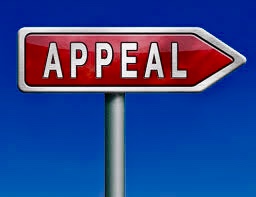Henderson v Myler 2021 BCSC 1649 refused to invoke S. 58 WESA to “ cure” an unsigned note found with the deceased’s will that purported to alter the will’s bequests quite substantially, finding that the note did not reflect the deceased’s last true intentions re the disposition of her estate.
The case is of note as the court sets out it’s analysis of the various pros and cons of finding that the note varying the will was the last true intention of the deceased.
Of further note the court adopted the reasoning of the Supreme Court of Australia in a similar fact case.
As set out in Young at paras. 34–37, the further a document departs from the formal requirements of a will, the harder it may be to find that it embodies the deceased’s testamentary intention.
Later BC cases have held that, particularly when key requirements are absent, such as the deceased’s or witnesses’ signatures, compelling and reliable evidence is required to satisfy the court that the document represents the testamentary intention of the deceased.
Accordingly, extrinsic evidence of the testator’s intentions is relevant, even if such evidence concerns events before or after the creation of the document at issue: Hadley at para. 40 and Poulk Estate, 2018 BCSC 1321 at para. 43.
Other factors include whether the language in the document is precatory or connotes a sense of finality: Lane Estate, 2015 BCSC 2162 at para. 44; Mace Estate (Re), 2018 BCSC 1284 at para. 47.
The factors supporting that the Note represents Ms. Murray’s final intentions are:
1. it was left in Ms. Murray’s lockbox with her 2013 Will;
2. at least until Ms. Murray went into VGH, she kept a key to the lockbox around her neck;
3. all ten beneficiaries in the 2013 Will are also listed on the Note and, with one exception, where two of the names were reversed, the Note tracked the order of the names in the 2013 Will;
4. Mr. Basich was added. He was a close friend of Ms. Murrays, and she repeatedly told him that she had left him something in her will. When he asked her not to mention it again, she responded that it was “too late” as he was already in her will;
5. Ms. Myler’s specific intent at the meeting at the Café was to settle the different dollar amounts set out in the 2013 Will and the Note, and Ms. Murray agreed to discuss it with her. Although Ms. Myler and Ms. Crawford did not witness the Note, they gave some evidence which confirmed that some of its contents reflected Ms. Murray’s wishes;
6. for the most part, the changes Ms. Murray made to her will, as reflected in the Note, are rational and consistent. Given Ms. Murray’s friendship with Mr. Basich, her addition of a gift to him is understandable. The increased amounts are also proportionate to the increase in the approximate value of her assets.
The factors in this case that do not support a finding that the Note represents Ms. Murray’s final intentions are:
1. Ms. Murray did not sign the Note, and it was not witnessed. The Note lacks all of the hallmarks of formal validity;
2. the Note is not titled, and it does not contain formal language revoking the 2013 Will or expressing an intent to change it and no language to show that the Note was intended to have testamentary effect;
3. the Note is not written on formal paper, but on a page from a note pad, suggesting an impermanence or informality rather than a fixed and final intention;
4. there is no express revocation of Ms. Murray’s 2013 Will or expression of her intention to change or alter it;
5. Ms. Murray did not tell anyone about the Note and did not provide a copy of it to her executrices;
6. the Note is a mix of Ms. Murray’s handwriting and Ms. Myler’s handwriting and notations. In some cases, the evidence is unclear as to who made what markings on the Note;
7. the Note did not reflect what Ms. Murray said in discussions with family members about the disposition of her estate;
8. some of the names written on the Note, and not crossed out, did not have a monetary gift assigned to them, suggesting they were not discussed at the May 4, 2017, meeting and that the Note was a work in progress;
9. the Note is a list of certain names with amounts, and in some cases with no amounts. Another note, containing similar information, was found in the kitchen by Ms. Crawford and thrown out. The existence of several notes, with similar writing, suggests an ongoing thought process rather than a final testamentary intent;
10. when Ms. Murray sought to change her 2010 Will, she wrote directly on the original of the Will. There was no writing on the 2013 Will; a signed copy of it remained in the lockbox;
11. the Note does not dispose of the entirety of Ms. Murray’s estate or specify what should happen to the residue of the estate.
In addition, the circumstances surrounding the Note do not suggest a fixed and final intention on Ms. Murray’s part. In 2010, Ms. Murray met with a lawyer to prepare the 2010 Will. In 2013, she met with a notary to prepare the 2013 Will. Ms. Murray brought the 2010 Will to Ms. Deprez to discuss it. She clearly knew she had to “go in” to make changes to her will.
Ms. Murray’s pattern of behaviour was to see a legal professional in order to change a will. Ms. Murray understood the formal process of attending at a professional’s office and going through the process of instructing the professional and formally executing a valid will. With respect to the 2013 Will, at their meeting on January 10, 2017, Ms. Murray told Ms. Deprez that she wished to change her will and she brought her 2013 Will to the meeting. She told Brian that she needed to change her will, and Tim made the appointment for Ms. Deprez to come and see her in February 2017.
Ms. Myler and Ms. Crawford did not ask Ms. Murray to sign the Note they discussed at the Café, and there was no evidence that it was impressed on Ms. Murray that the Note would stand as her last will and testament. There is no evidence that at their meeting at the Café, Ms. Murray considered that the Note she discussed with her friends was a formal document that would govern how her estate was disposed of upon her death
Ms. Myler and Ms. Crawford did not discuss with Ms. Murray what was to happen to the residue, or what was left, of Ms. Murray’s estate after payment of the gifts to her extended family and her friend. In fact, Ms. Crawford testified that after the discussions at the Café, the three friends discussed the need to see a lawyer to finish what was left. Such a meeting was not possible in May 2017, but was planned for Ms. Myler and Ms. Crawford’s fall visit
There is no evidence that Ms. Murray turned her mind to how the Note would affect the disposition of the residue of her estate. It would pass on intestacy to three persons who were expressly excluded from the Note. Daniel and Ron were crossed off in the Note, and Brian was not named at all (nor had he been in the 2010 or 2013 Wills). Ms. Murray also made it clear to Ms. Myler that $100,000 was a sufficient gift to Verna
It cannot have been Ms. Murray’s fixed and final testamentary intention to allow 3/4 of the residue of her estate, approximately $982,500, to pass to her three nephews, when she made it clear she did not wish to leave them anything. Nor can it have been Ms. Murray’s fixed and final testamentary intention that over $300,000 would go to Verna, when she had said $100,000 was enough. The failure to deal with the residue in the Note, in addition to the other factors I have outlined, weighs against accepting the Note as a codicil to Ms. Murray’s 2013 Will or as a new testamentary document. Curing the Note under s. 58 would provide each of Dan, Ron, and Brian with the largest gifts out of her estate, which was not Ms. Murray’s testamentary intention
I cannot speculate as to what Ms. Murray would have done with the residue of her estate if she had gone through the formal process of executing a new will in 2017. Perhaps, it would have been shared equally among all of those who benefitted under the 2013 Will which was what Ms. Myler said in her deposition that she thought would happen. Perhaps, based on advice, she would have made a different arrangement entirely
Although the plaintiffs make much of the fact that the size of the gift to the BC SPCA in the 2013 Will was unusual and inconsistent with the average testamentary gift to the charity, it is not determinative in the analysis. Ms. Murray had no immediate family. It is entirely possible that she chose to benefit a charity that reflected her love of animals as opposed to extended family members. The question is what Ms. Murray subjectively intended, not what an average person would choose to do with their estate.
The plaintiffs also suggest that the timing of the Note supports the inference that Ms. Murray intended it to be a final alteration. Their submission is based on the assumption that the Note was prepared when Ms. Murray was 99, suffering from health issues, and understood that she was nearing the end of her life. As I have said, there is no evidence of when Ms. Murray prepared the Note. The evidence suggests that she did not anticipate a rapid decline in her health around the time of her 99th birthday, since Ms. Myler and Ms. Crawford’s evidence is that they intended to carry on the work of revising and completing Ms. Murray’s will when they return in the fall. I cannot draw the inference the plaintiff suggests.
A document like the Note was analysed in Re Lynch, [2016] VSC 758, a decision of the Supreme Court of Victoria in Australia. The legal principles developed under s. 9 of the applicable Wills Act in that case are similar to those under s. 58 of WESA.
At issue in Lynch were two documents prepared eight years before the deceased’s passing: a handwritten page appointing an executor that was signed and witnessed, and a handwritten, undated, unsigned, and unwitnessed list of names with dollar amounts next to them, written in both blue and black ink. Both documents were created in the hospital before Mr. Lynch underwent surgery, and he was worried that he did not have a will. He did not plan to see a lawyer and said he could do his will “right then and there”. The document was created in front of three witnesses in black ink by the deceased with edits later made in blue ink after discussions at the hospital. Following the page with the beneficiaries and dollar amounts, which remained unsigned and unwitnessed, the page naming the executor was created which was signed and witnessed. One of the witnesses took the documents and placed them in his filing cabinet at home: paras. 41, 43, 45, 48, 55, and 63.
The court in Lynch reviewed cases from that jurisdiction and said that, in determining whether the deceased intended the document to be a will, the court must be satisfied that the deceased demonstrated an intention that, without any alteration or reservation, the document should have effect as his will. The person must have “intended the document to be a legally operative act that disposes of the person’s property upon his or her death, rather than a provisional, preliminary, or tentative proposal.” The court relied on a similar principle to that explained in Young and in Hadley, in the context of s. 58 of WESA, that the further away from formal compliance a document is, the more difficult it will be for the court to be satisfied that the deceased intended the document to be his will: at paras. 11, 15–22.
The court concluded that the second document could not have been intended to have the effect of a will. There was no strong nexus between the list of names and the signed executor page.
The list of names had no heading and was not signed, dated, or witnessed. The court said it bore the “hallmarks of a provisional, preliminary or tentative thought process, rather than a legally operative act that disposes of the deceased’s assets upon his death.” It was relevant that the specific gifts did not add up to the deceased’s entire estate, which brought into question whether the deceased intended to dispose of his estate by way of the list: at paras. 76–78, 87.
There was evidence in Lynch of conversations about seeing a lawyer after the list was created. The discussion was to have the documents reviewed, “if not revised” by a solicitor and that Mr. Lynch should take the documents to a lawyer.
In this case, the Note disposes of $540,000 in specific gifts to Ms. Murray’s extended family and friends, leaving $1,310,000 in the residue (based on a distributable amount of $1.85 million).
A failure to deal with an amount of that size weighs against the Note representing Ms. Murray’s fixed and final intentions. Also, as I have said, Ms. Murray, Ms. Myler, and Ms. Crawford discussed how it would be difficult to see a lawyer during Ms. Myler and Ms. Crawford’s May 2017 visit, and they planned to see one in the fall.









